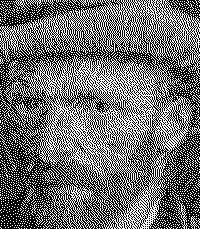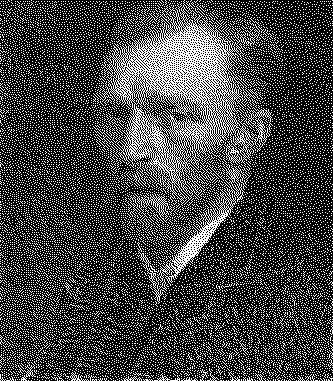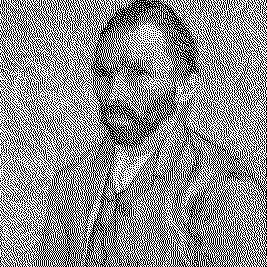Artists/Vincent van Gogh
Fast Facts
Pioneer of Post-Impressionism
Vincent van Gogh is renowned for his vital role in the development of Post-Impressionism, an art movement that emerged as a reaction against Impressionists' concern for the naturalistic depiction of light and color. Van Gogh's work is characterized by its bold color, expressive brushwork, and emotional intensity, which paved the way for the advent of modern art in the 20th century.
Mastery of Color and Emotion
Van Gogh's art is distinguished by its vibrant color palette and the powerful emotional depth it conveys. He used colors symbolically to express his inner feelings and states of mind, a technique evident in works like "Starry Night," where swirling skies reflect his turmoil and awe towards the universe.
Innovations in Brushwork
His unique brushwork, consisting of thick, impasto strokes, added a dynamic, tactile quality to his paintings. This technique not only contributed to the visual intensity of his work but also influenced the direction of expressionism, emphasizing the emotional and psychological content of art.
Themes of Nature and Hardship
Van Gogh's subjects often included landscapes, still lifes, and scenes from rural life, reflecting his appreciation for nature and the common man's struggles. His paintings, such as "The Potato Eaters" and numerous self-portraits, reveal a profound empathy for humanity and personal suffering, mirroring his own troubled life.
Legacy and Posthumous Fame
Despite achieving little to no recognition during his lifetime and struggling with mental health issues, Van Gogh's work gained immense popularity and critical acclaim after his death. Today, he is celebrated as one of the most influential figures in the history of Western art, with his pieces fetching some of the highest prices at art auctions and being showcased in major museums around the world.
Biography



Vincent van Gogh, born on March 30, 1853, in Zundert, Netherlands, is celebrated as one of the most iconic and influential painters in Western art. His journey to becoming an artist was unconventional and fraught with personal challenges. Initially, van Gogh worked in an art dealership, followed by a stint as a missionary, before fully dedicating himself to painting at the age of 27. His early works, such as those produced during his time in Nuenen, are marked by dark, somber tones and focus on the struggles of peasant life, exemplified in his masterpiece "The Potato Eaters" (1885) (Encyclopedia Britannica) (Van Gogh Biography).
Van Gogh's artistic style underwent a significant transformation during his time in Paris from 1886 to 1888. Here, he encountered the Impressionists and was profoundly influenced by their use of light and color. This period also marked his discovery of Japanese woodblock prints, which inspired him to experiment with bold compositions and vibrant colors. His Paris years were a time of prolific output and stylistic evolution, leading to a lighter palette and more expressive brushwork (World History Encyclopedia).
Seeking a retreat from the frenetic pace of Paris, van Gogh moved to Arles in southern France in 1888. The bright sunlight and vivid landscapes of Provence had a profound impact on his work, leading to some of his most famous pieces, including the "Sunflowers" series and "The Starry Night." Despite his creative surge, this period was also marked by mental turmoil, culminating in his infamous altercation with fellow artist Paul Gauguin, after which van Gogh mutilated his own ear. His mental health continued to decline, leading him to voluntarily admit himself to an asylum in Saint-Rémy-de-Provence in 1889 (Encyclopedia Britannica) (The Metropolitan Museum of Art).
During his time at the asylum, van Gogh continued to paint prolifically, producing over 150 works that are now considered some of his most powerful. His paintings from this period, such as "Irises" and "Wheatfield with Cypresses," reflect a deep emotional intensity and a profound connection to nature. In May 1890, van Gogh moved to Auvers-sur-Oise, where he continued to work under the care of Dr. Paul Gachet. However, his mental health issues persisted, and on July 27, 1890, van Gogh shot himself in the chest, dying two days later at the age of 37 (The Metropolitan Museum of Art) (World History Encyclopedia).
Vincent van Gogh's work, largely unrecognized during his lifetime, gained immense posthumous fame. His use of color, emotional depth, and innovative brushwork have left an indelible mark on the art world, influencing countless artists and establishing him as a pioneer of modern art. Today, his paintings are among the most recognizable and celebrated in the world, serving as a testament to his enduring legacy (Encyclopedia Britannica) (vangoghgallery).
Bodies of Work
-

The Potato Eaters
1885
-

Parisian Scenes
1886–1888
-

Montmartre
-

Self-Portraits
-

Portraits of Others
1886–1889
-

Sunflowers
-

Arles
1888–1889
-

The Roulin Family
1888–1889
-

The Night Cafe
1888
-

The Starry Night over the Rhone and the Starry Night
1888–1889
-

Saint-Paul Asylum, Saint Remy
1889–1890
-

Olive Trees
1889
-

Cypresses
-

Wheat Fields
-

Auvers-sur-Oise
Importance
Vincent van Gogh's importance in the history of art and culture is multifaceted, with his influence permeating various aspects of modern and contemporary art.
Pioneer of Expressionism
Van Gogh is often credited as a precursor to Expressionism, a movement that emerged in the early 20th century. His intense emotional expression through vivid colors and dramatic, swirling brushstrokes laid the groundwork for artists like Edvard Munch and the German Expressionists, who sought to convey emotion rather than realistic representation (Encyclopedia Britannica) (The Metropolitan Museum of Art).
Revolutionary Use of Color
Van Gogh's innovative use of color, particularly his vibrant, non-naturalistic palette, broke away from traditional color theories. His bold approach influenced the Fauves, including Henri Matisse, who adopted similar methods to evoke emotional responses through color (The Metropolitan Museum of Art).
Impact on Modern Art
Van Gogh’s work significantly influenced the development of modern art. His willingness to experiment with form, color, and texture inspired generations of artists. The Post-Impressionists, including Paul Cézanne and Georges Seurat, drew from van Gogh's techniques, pushing the boundaries of traditional art and leading to the rise of modernism (World History Encyclopedia).
Cultural Icon
Beyond his technical contributions, van Gogh has become a cultural icon representing the archetype of the tortured artist. His life story, marked by struggle and mental illness, has resonated deeply with audiences and artists alike, making him a symbol of the complex relationship between creativity and mental health (Van Gogh Biography) (vangoghgallery).
Prolific Correspondence and Insight into Artistic Process
Van Gogh's extensive letters, especially those to his brother Theo, provide invaluable insights into his creative process, thoughts on art, and the challenges he faced. These letters are crucial documents for understanding his work and the broader context of 19th-century art (The Metropolitan Museum of Art).
Posthumous Recognition and Legacy
Although van Gogh was virtually unknown during his lifetime, his posthumous influence has been profound. Exhibitions of his work in the early 20th century helped to cement his status as a master of modern art. His paintings are now some of the most famous and valuable in the world, underscoring his enduring legacy (Encyclopedia Britannica) (World History Encyclopedia).
Technique
Vincent van Gogh's techniques are a significant aspect of his artistic legacy, and they have been studied extensively for their innovation and influence on later art movements.
Impasto
Van Gogh is renowned for his use of impasto, a technique where paint is applied thickly to the canvas, creating a textured surface. This method allowed him to add a sense of dynamism and movement to his works, with brushstrokes that are visibly expressive. The impasto technique is evident in paintings like "The Starry Night" and "Wheatfield with Crows," where the textured surface contributes to the emotional intensity of the scenes (The Metropolitan Museum of Art).
Expressive Brushstrokes
Van Gogh's brushstrokes are a defining feature of his style. He used short, rapid strokes to create a sense of energy and movement. This technique was particularly effective in conveying the emotional and psychological states he sought to express, as seen in works like "The Night Café" and "The Bedroom" (World History Encyclopedia) (vangoghgallery).
Bold Color Palette
Van Gogh's use of color was revolutionary for its time. He employed a bold, vibrant palette that often disregarded realistic colors in favor of emotional impact. This use of color was heavily influenced by his study of Japanese prints and his exposure to the works of the Impressionists. Paintings such as "Sunflowers" and "Irises" showcase his daring use of color to convey mood and atmosphere (Encyclopedia Britannica) (The Metropolitan Museum of Art).
Symbolic Use of Color and Form
Beyond merely bold hues, van Gogh used color and form symbolically to convey deeper meanings. For example, in "The Night Café," the use of red and green is meant to symbolize the oppressive, almost suffocating atmosphere of the café, where, as van Gogh described, one could "ruin oneself, go mad, or commit a crime" (World History Encyclopedia).
En Plein Air Painting
Van Gogh was a strong advocate of painting outdoors (en plein air), which allowed him to capture the changing effects of light and atmosphere directly from nature. This technique was influenced by the Impressionists and is evident in works such as "Starry Night Over the Rhône" and his various studies of wheat fields (vangoghgallery) (Van Gogh Biography).
Divisionism
Although not as rigorously applied as by the Pointillists, van Gogh experimented with Divisionism, a technique involving the separation of colors into individual dots or strokes that interact optically when viewed from a distance. This can be seen in some of his Paris works, where he was influenced by artists like Georges Seurat and Paul Signac (World History Encyclopedia).